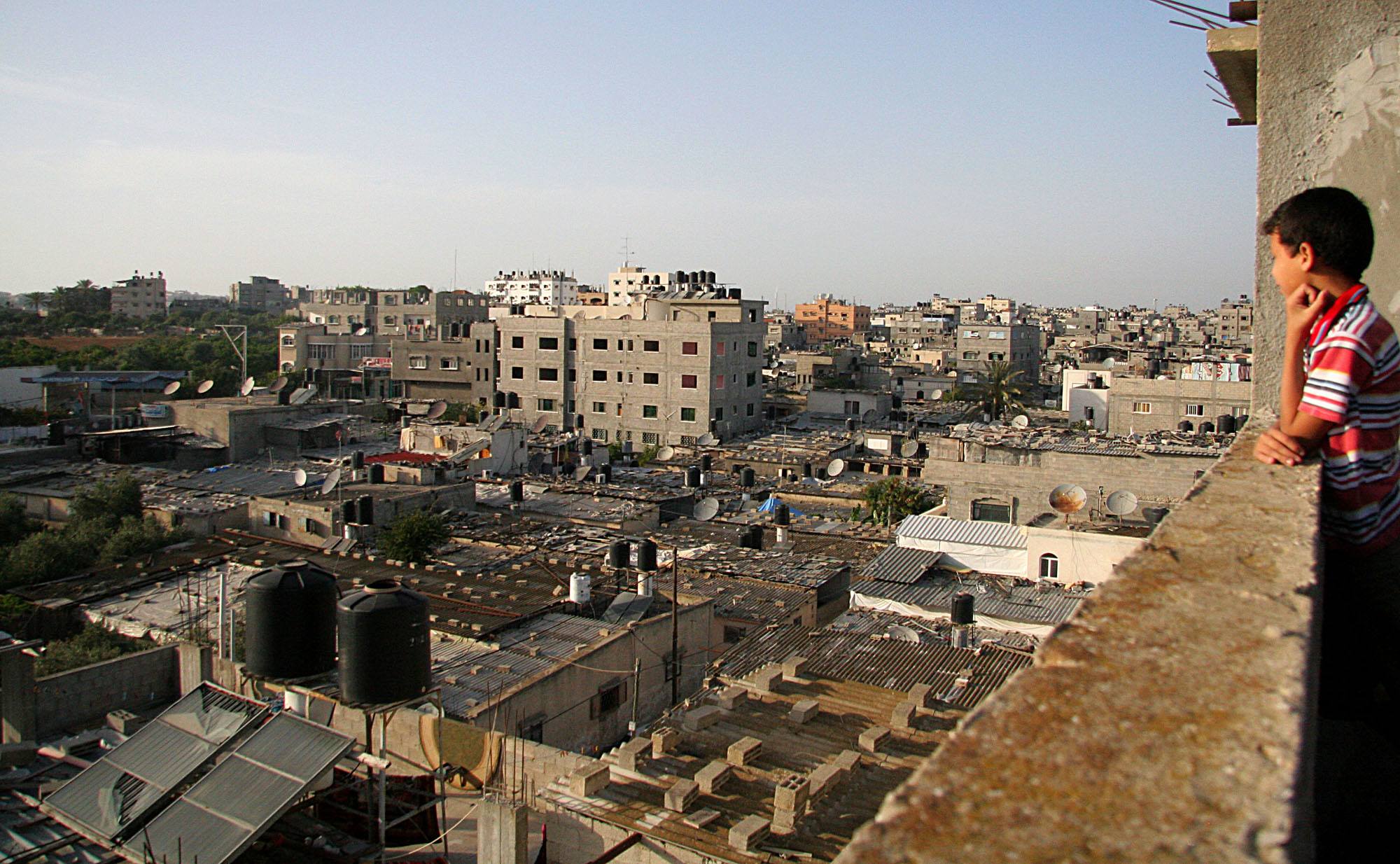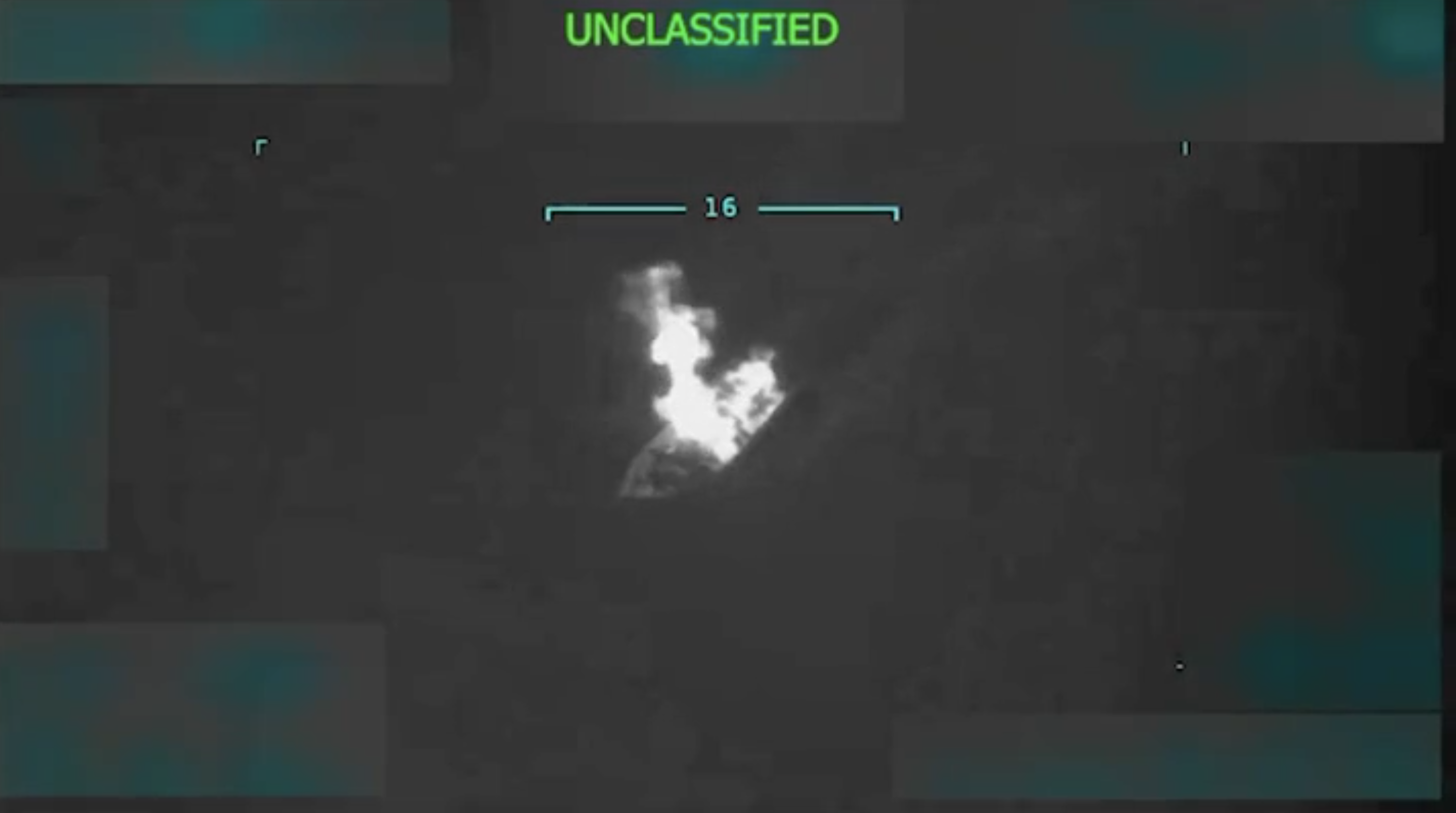Assessing Israel’s Approach to Proportionality in the Conduct of Hostilities in Gaza
The Jabalia strike indicates that the IDF’s tolerance for civilian casualties is multiples greater than that of the U.S. in the ISIS war.

Published by The Lawfare Institute
in Cooperation With

Since the start of Israel’s current military operations in Gaza, launched in response to the murderous Oct. 7 Hamas attack in which over 1,200 Israelis and foreigners were killed, reports of mass civilian casualties in Gaza have been met with a barrage of claim and counterclaim regarding attribution, responsibility, justification, and, of course, legality. The absence of serious investigations on the ground has led some experts to caution that no firm conclusion can be drawn about whether a particular attack is lawful, even one that killed a very large number of civilians. The resulting confusion could almost lead one to despair about the practical contribution of international humanitarian law (IHL) to regulating the conduct of hostilities, at least while they were ongoing.
However, taking into account Israel’s official statements regarding specific attacks enables an early assessment to be made regarding the understanding of proportionality employed by the Israel Defense Forces (IDF) in their consideration of what may constitute “excessive” civilian deaths. Whereas in the vast majority of cases the IDF have given only a very general indication of objectives, in one of the largest attacks, the Oct. 31 Jabalia camp strike, the IDF published details on the military objective and means of attack, providing an important insight into Israel’s approach to proportionality in the conduct of hostilities in Gaza. Here, I consider IHL and the relevant proportionality test, and not other branches of law (which have separate tests of proportionality), including the jus ad bellum and associated debates concerning Israel’s right to defend itself.
The Jabalia Camp Attack
On Oct. 31, an Israeli attack struck the Jabalia refugee camp in northern Gaza, causing extensive physical destruction over an area of at least 2,500 square meters. In the immediate aftermath of the strike, the surgical director of Jabalia’s Indonesian Hospital told the BBC that it had received 400 casualties, including 120 dead, and that the majority were women and children. The monitoring group Airwars reported following an investigation that the attack “killed at least 126 civilians, including 69 children.”
A IDF spokesperson confirmed that the attack had been an Israeli airstrike. Within hours, the IDF published a press release stating that IDF fighter jets, acting on intelligence from the Israeli Security Agency (Shin Bet), had killed Ibrahim Biari, commander of Hamas’s central Jabalia battalion, described as one of the leaders of the Oct. 7 massacre. Furthermore, the press release reads that “his elimination was carried out as part of a wide-scale strike on terrorists and terror infrastructure belonging to the Central Jabalia Battalion, which had taken control over civilian buildings in Gaza City.” The statement adds: “Underground terror infrastructure embedded beneath the buildings, used by the terrorists, also collapsed after the strike.” The Qassem brigades, Hamas’s military wing, dismissed the claim that a commander had been killed, accused Israel of targeting civilians, and said that the attack had killed seven of the hostages that had been kidnapped from Israel, including three holding foreign passports.
Taking the IDF statement at face value enables us to dismiss questions over attribution and the possibility of various forms of mistake, including target misidentification, pilot error, and weapons malfunction. The Oct. 31 Jabalia strike was no accident: It was an attack on a known military target, apparently executed as planned. But was it lawful?
Proportionate Civilian Killing in Law and Practice
As is well known, the killing of civilians is not necessarily unlawful under IHL. While the intentional targeting of civilians is always prohibited, civilians may be lawfully killed if the harm is incidental to an attack on a military objective and, as stated in Article 51 of Protocol 1 to the Geneva Conventions, the expected “loss of civilian life, injury to civilians, damage to civilian objects, or a combination thereof” is not “excessive in relation to the concrete and direct military advantage anticipated.” Neither Israel nor the U.S. is a party to Protocol 1, but both accept the rule on proportionality in attack as customary international law. The characteristics of the test have been subjected to extensive discussion; Emanuela-Chiara Gillard offers a very good summary in “Proportionality in the Conduct of Hostilities: The Incidental Harm Side of the Assessment.”
It is important to recognize that the test is prospective; it does not depend on a post facto assessment of actual civilian harm but on balancing foreseeable civilian harm and anticipated military advantage, based on the knowledge available to a commander at the time. It follows from this that proportionate killing of civilians is deliberate killing (even if IHL lawyers have a tendency to be reticent on that point). It is not harm that arises through error or accident or by what is implied by phrases such as “caught in the crossfire.” Although civilian harm is not the aim of the attack, it is an outcome that was expected to be caused by the attack in the ordinary course of events (broadly equivalent to the common law notion of oblique intent). In fact, in addition to the general duty to take constant care to spare civilians and to take precautions to avoid or in any event minimize civilian harm, a commander who knows or suspects that civilians will be present at the site of a planned attack on a military target is obliged to make an estimation of the expected civilian harm. In the U.S. military and other NATO militaries, this is known as collateral damage estimation (CDE). Only if the expected damage is proportionate (not “excessive”) can the attack lawfully be executed.
Seeking to compare or balance two values that are not commensurable obviously resembles a problem in moral philosophy rather than an exact science. Representing the test as an equation helps to illustrate the point:
x expected civilian harm ≤ concrete & direct military advantage anticipated
There has been recent renewed interest in the development of quantifiable or at least standardized methodologies for assessing proportionality, including artificial intelligence-assisted models (for a discussion, see here). To date such models have been treated with suspicion, not least from humanitarians who understandably balk at the prospect of decreeing any level of civilian killing acceptable in advance.
Perhaps the more immediate problem is communicating proportionality limitations to commanders and their subordinates, who are unlikely to have a qualification in philosophy and who need rules that can be operationalized efficiently and that can withstand the stress of battle. (Where attacks are planned well in advance, there is time to take legal advice, but the problem is particularly acute in dynamic targeting, where forces are responding to rapidly evolving threats or opportunities). Partly as a way of addressing this problem, the U.S. and its allies and coalition partners in the wars in Afghanistan and Iraq developed the concept of the non-combatant casualty cut-off value (NCV); this effectively assigns an operational value to the parameter x for specific attacks or operations, at least as regards death or serious injury.
As with all rules of engagement (ROEs), NCVs are classified. It is also important to recognize that ROEs are not in themselves statements of the law. Their content can be determined by a range of operational factors, both strategic and tactical, including the need to maintain public confidence, whether in the theater of operations or at home. In “The War Lawyers: The United States, Israel and Juridical Warfare,” Craig Jones describes how during the Afghanistan and Iraq wars NCVs shifted between operations and over time, and how different NATO and coalition members set differing NCV values. Lack of comprehensive, comparative data makes precise figures elusive, but it is nonetheless apparent that the median NCV was in the single digits and that the United Kingdom and some other European nations had a lower tolerance for civilian casualties than the United States.
But ROEs are also a primary mechanism by which IHL compliance is implemented in operations. In the words of a senior U.S. commander, NCVs became for many years the tool used to “objectively quantify proportionality.” A key driver for the development of NCVs was an incident in 2001 when a proposed strike on Taliban leader Mullah Omar was abandoned at the direct insistence of a U.S. military lawyer because four civilians were present at the attack site. Peter Gersten, former deputy commander of operations and intelligence for Combined Joint Task Force Operation Inherent Resolve, states that “[w]ith Osama Bin Laden, you’d have an NCV value of 30, but if you had a low-level commander, his NCV was typically zero. We ran zero for the longest time.” U.S. Secretary of Defense Lloyd Austin, when he was head of U.S. Central Command (CENTCOM) during the war against ISIS, would personally be called to authorize an operation with a “high” NCV of 14 or 15.
The use of NCVs was reportedly removed from U.S. military doctrine in 2018, following what was labeled at the time as the largest urban battle since World War II, the siege of Mosul in 2016-17. (The thousands of civilian casualties from coalition operations in Mosul and Raqqa were memorably described as “death by a thousand proportional strikes.”) The Pentagon’s Civilian Harm Mitigation and Response Action Plan, published last year, makes no mention of NCVs and outlines a more multifaceted approach to mitigating civilian harm. One of the main concerns about NCVs was that, in setting an upper threshold for civilian casualties, they obscured the legal duty to avoid or at least minimize any civilian harm. (Or, even worse, that they could effectively function as a license to kill, a possibility that the U.K.’s ongoing Haddon-Cave inquiry into alleged civilian killings by U.K. special forces in Afghanistan will need to consider.)
Expected Civilian Harm in the Jabalia Camp Attack
A collateral damage estimation in advance of the Jabalia airstrike would have included the following basic information:
The United Nations had over 110,000 refugees registered in Jabalia over an area of 1.4 square kilometers, making Jabalia exceptionally densely populated. (By way of comparison, Manhattan has a population density of 28,000 per square kilometer.)
Despite Israel’s warnings to the Gaza population to move to the south, a significant proportion of the civilian population in Jabalia remained in place on Oct. 31, as was evident from social media videos uploaded in the days immediately preceding the strike.
Other recent Israeli attacks on Jabalia had caused numerous civilian casualties, including dozens reportedly killed from an attack on Oct. 9 and civilians accounting for the majority of the 30 claimed killed from an attack on Oct. 22.
The reference to the Israel Security Agency in the IDF statement indicates that the site was being actively surveilled and that a high level of intelligence was available to commanders.
Satellite visual analysis of the attack site shows at least five large craters, including two approximately 40 feet wide, consistent with the impact of 2,000-pound Joint Direct Attack Munitions. The attack destroyed not just one residential apartment building, but a whole block.
Even without specific further intelligence, on the basis of this information Israel’s CDE must have resulted in a very high estimate for civilian casualties. Given the location, population spread, and choice of weapons, the actual toll of hundreds of civilians killed or wounded would have been a reasonable expectation.
Against this expected civilian harm, the IDF would need to have weighed the anticipated military advantage. Here, some uncertainty remains as to Israel’s approach, including the extent to which the military advantage of each target is assessed according to its contribution toward the overall campaign, a caveat noted by Amichai Cohen and Yuval Shany in their thought-provoking piece on the need for “Unpacking Key Assumptions Underlying Legal Analyses of the 2023 Israel-Hamas War.”
But the proportionality test as a whole needs to be applied to an individual attack, and the military advantage needs to be both “concrete” and a “direct” result of the attack. In launching an attack to kill the Hamas commander and degrade Hamas infrastructure in Jabalia, the IDF appears to have accepted a level of expected civilian casualties that was not just larger but several times larger than that used by the U.S. and the U.K. in any of the operations during the war against ISIS and other counterterrorism campaigns.
Two justifications or mitigating factors for the high civilian casualties have been offered or implied, in addition to the IDF statement referenced above. In explanations to U.S. officials, and in a later press briefing, Israel’s account of what caused the collapse of the buildings was clarified. An IDF spokesperson said that the IDF had struck “in between buildings, aiming to destroy the tunnels underneath” (effectively also confirming the use of large, precision-guided munitions). The result, bringing down nearby buildings, “cannot be avoided,” he said.
However, the estimation of civilian harm in the proportionality test includes the total harm that is reasonably foreseeable—that is, expected to result from the attack in the ordinary course of events. If (part of) the military advantage anticipated by Israel was the destruction of the tunnels, it follows logically that the collateral damage expected from the collapse of the tunnels should have been included in the estimate. (The estimation process should also have at least considered the possibility that hostages could be harmed, depending on Israel’s intelligence as to their location.)
Both the IDF statement and further comments by a spokesperson also refer to IDF calls to residents to move south. Prior warnings, if that is what is claimed here, are part of the law on precautions and cannot legitimate an otherwise unlawful attack. Nor is Israel’s responsibility for assessing proportionality affected by Hamas’s manifest failure to take passive precautions to protect civilians against the effects of attacks. Civilians who chose to remain in Jabalia retain their civilian status and protection under IHL at all times.
Conclusion
The accepted circumstances of the Oct. 31 Jabalia attack and the light shed by the IDF statement on planning for the attack suggest that Israel’s tolerance for civilian casualties is now completely out of step with that employed by the U.S. and its coalition partners in the war against ISIS and other counterterrorism operations in Iraq and Afghanistan over two decades. Further, Israeli attacks in Gaza since Oct. 31 only serve to reinforce that impression. (There may be some debate over whether such conflicts are strictly comparable, but it is notable that Israel itself has sought to promote the analogy in its “Hamas is ISIS” information campaign.) Given that the apparent difference between the Israeli and U.S./U.K. working understanding of “excessive” civilian harm is several orders of magnitude, it is hard to imagine that U.S. or U.K. military lawyers would ever have greenlighted the Jabalia strike had they been in the command center.
Responding to the attacks on Jabalia and another refugee camp, Al Bureij, and the “reported use of explosive weapons with wide area effects in some of the most densely populated areas of Gaza,” the UN Office of the High Commissioner for Human Rights expressed “serious concerns that the principles of distinction and proportionality are not being respected by both sides.”
For the policy of the U.S., the U.K., and other states that are providing material and diplomatic support to Israel’s military operations in Gaza, this presents a significant challenge. Under the Geneva Conventions (Common Article 1) and the International Law Commission’s Articles on the Responsibility of States, there is a responsibility not just to respect but to ensure respect for IHL and to avoid aiding or assisting another state in the commission of an internationally wrongful act.
As it is, disquiet is clearly growing rapidly in the Biden administration about the scale of civilian casualties in Gaza. On Nov. 6, CNN reported that National Security Council spokesperson Adm. John Kirby said the administration is “not giving [the Israelis] tactical advice on how to conduct their operations on the ground” and distanced the U.S. from Israel’s targeting process. Questioned about IDF efforts to minimize civilian deaths, he stated, “We have seen some indications that there are efforts being applied in certain scenarios to try to minimize, but I don’t want to overstate that,” adding that “many, many thousands of innocent people” had been killed in Gaza.
The attempts described here to assign cold numbers to “proportionate” or “non-excessive” civilian deaths may leave the general reader discomfited. Legal thresholds are not coterminous with moral ones, and nowhere is the divergence more stark than in the rules on proportionality in the conduct of hostilities. But the law matters, if only because it is designed not to give general guidance but to produce specific real-world effects. This may have been what Yoram Dinstein had in mind when he famously wrote that “[p]roportionality is the true guarantee of robust civilian protection from the effects of attacks in wartime.” Israel’s commitment to that protection is now seriously in doubt. For how much longer can the U.S. and the U.K. continue to give Israel’s military operations their unqualified support?

.jpg?sfvrsn=509f2911_3)


